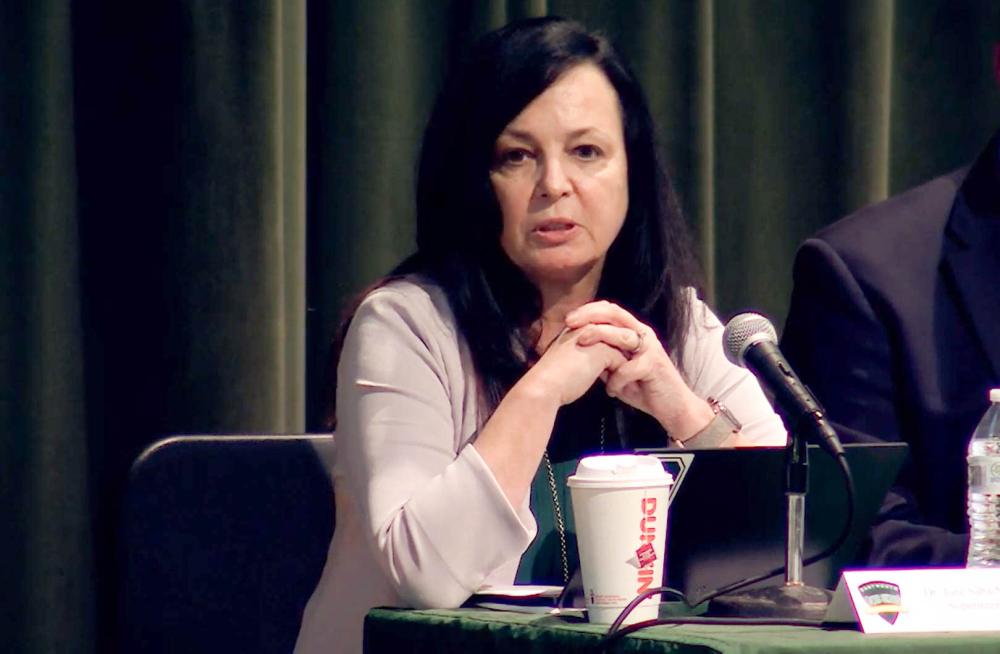Dartmouth School Committee approves District Strategic Plan
The Dartmouth School Committee approved its five-year District Strategic Plan at a committee meeting on Monday, Oct. 7.
Going into effect in 2024, the plan will extend through 2029 with the goal of supporting student and staff needs to cultivate a safe, supportive and inclusive learning environment that will empower students, Superintendent June Saba-Maguire said.
The plan aims to accomplish its goal by ensuring curriculums employ culturally and intellectually affirming practices, supporting a sense of belonging, strengthening engagement between the community and families and creating a joint vision for funding and facility needs, she added.
“Our strategic plan helps create a shared vision and common purpose for every member of the One Dartmouth community,” Saba-Maguire said. “[It] identifies our district's mission, core values, goals and the underlying theory of action that we believe will ultimately allow us to make good on our promise to the community of providing unparalleled opportunities.”
During the School Committee meeting, Saba-Maguire and authors of the strategic plan explained the plan’s four focus areas and objectives.
These areas were teaching and learning, safe and supportive schools, family and community engagement and budget and capital improvements.
In the teaching and learning area, the strategic plan will support the “varied” needs of students and staff through “improved practices,” the plan outlines. It will also promote innovation and a “horizontally and vertically aligned curriculum.”
A horizontal curriculum means educational materials and resources should be the same in classrooms of the same grade level across the district, Saba-Maguire said
To create a vertical curriculum, educators look at the state standards to ensure that the district’s curriculum in Kindergarten to 12th grade classrooms are on par with and aligned to the rest of the state, she said.
Initiatives in the teaching and learning area include ensuring vertical and horizontal alignment, designing learning opportunities relevant and supportive of professional growth for educators and staff, and reimagining educational pathways and opportunities for students, according to Catherine Pavao, a director of teaching and learning.
Steps to enact the initiatives include implementing a curriculum review cycle, identifying, piloting, and implementing high quality research-based curriculum and developing a data dashboard related to student achievement, Pavao added.
“What we’re doing with our students shouldn’t be a mystery to people,” she said.
The safe and supportive schools focus area centers around building a sense of belonging and social emotional well-being with culturally and intellectually affirming practices, according to Laurie Dionisio, director of student services.
Initiatives in this area include building the capacity to support social economical wellness, enhancing the sense of pride and culture in schools, expanding before and after school programs and aligning safety practices across the district to enhance emergency response preparedness, Dionisio said.
The plan maps out several action steps, such as establishing a consistent protocol for safety drills that will be conducted annually and identifying evidence-based interventions to address social emotional wellness.
The third focus area — family and community engagement — looks to strengthen interactions and engage families and stakeholder groups as partners, according to Jonathon Gallishaw, the chief technology officer.
Initiatives in the focus area include implementing a district-wide communication plan for families and community members and establishing and strengthening relationships and opportunities to engage with the school and community.
The plan will administer a district-wide Family and Community Engagement Survey to identify preferred methods of communication and areas of opportunity to strengthen engagement between families, caregivers and the district, Gallishaw said.
A District Communications Team will also be established to analyze the data collected from the survey to develop a communication plan.
The plan looks to “make communications smarter and more efficient,” Gallishaw said.
In the budget and capital improvements focus area, the plan aims to enhance collaboration between schools, town government and the community to create a joint vision to address school funding, facility issues and staff recruitment, said James Kiely, assistant superintendent of Finance and Operations.
This fourth focus area will work to communicate and advocate for instructional and operational needs of the district by addressing identified structural deficiencies, as well as for facility and capital improvement needs, Kiely said.
Key action steps include implementing and monitoring the effectiveness of the budget plan and completing capital improvement projects.
At the center of the strategic plan and focus area is the concept of “one Dartmouth,” Saba-Maguire said, adding that the plan looks to move beyond the slogan to a “reality.”
“United as ONE DARTMOUTH, we are invested in the ongoing improvement of our community,” the plan’s vision statement read.
According to its mission statement, the plan is “committed to cultivating a safe, supportive and inclusive learning environment that empowers all students to become compassionate, informed and contributing members of our local and global community.”
The five core values in the plan are personal excellence and responsibility, respect for self and others, inclusivity, equity and belonging, diverse opportunities and student agency, and ethical commitments, according to Saba-Maguire.
“This is the work that excites us as educators,” Saba-Maguire said.














